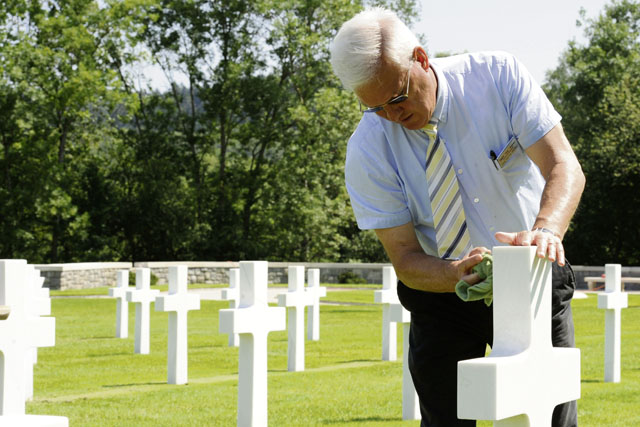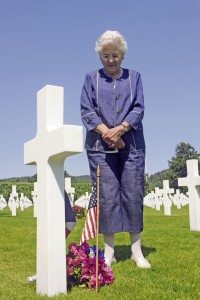
DINOZÉ, France — Recently, Brig. Gen. Paul M. Benenati, the 21st Theater Sustainment Command deputy commanding general, visited a small cemetery at the foothills of the Vosges Mountains. The Epinal American Cemetery and Memorial houses the remains of 5,255 fallen U.S. Soldiers and is considered a beautiful tribute to the warriors laid to rest there. After his visit, Benenati remarked that this unique landmark overlooking the Moselle River was an under-noticed burial site for Soldiers killed during World War II.

Epinal was liberated from the German army on Sept. 23, 1944, by the U.S. 7th Army and began receiving and burying the remains of American and German soldiers 15 days later. By the end of the war, there were 7,752 American Soldiers buried there and more than 6,000 Germans. The then active cemetery received new remains for burial on a near daily basis, said retired Command Sgt. Maj. Dwight “Andy” Anderson, the superintendent of Epinal American Cemetery and Memorial.
“Back when the cemetery first opened and was completely active, there were bodies coming in all the time, and active exhumations and burials going on,” Anderson said. “There were also German prisoners of war working to bury both U.S. and Germans. It definitely wasn’t the beautiful piece of land it is today.”
Shortly after the cemetery’s inception, the mayor of Epinal requested that members of his community adopt graves in the cemetery and place flowers on them to honor the U.S. Soldiers who liberated their city. One of the first to respond to this call was a young girl by the name of Regine Ruyer from Brouvelieures, France. In spite of the spectacle of bodies being buried and exhumed, she went to the grave of Pfc. John Macedo, a Soldier assigned to the 36th Combat Engineer Regiment, every Thursday to place fresh flowers.
“It was very important to me then to respect these Soldiers because we had just been liberated,” Ruyer said. “I was 14 years old then, and every Thursday a friend of mine and I would come to the cemetery to pay our respects. After I adopted the grave, I got in touch with and corresponded with Pfc. Macedo’s fiancee (Adeline Philipe) in America.”
For 68 years, Ruyer continued to come to the same grave site every Thursday to place red, white and blue flowers on the grave even after Macedo’s fiancee passed away.
During their correspondence, Philipe would send Ruyer greeting cards, cake batter and candy, all items that were difficult or impossible to find in post-war France.
“Back then, this land was very rudimentary. The crosses were wooden, the ground was still shook up from the bombs, there was mud and water and bodies,” Ruyer said. “The colorful cards and letters gave me something beautiful to look at.”
Since the end of the war, members of the French community continued to take care of and place flowers on the graves of fallen U.S. Soldiers. Today, both French and U.S. citizens can adopt graves at Epinal American Cemetary. For more information, email andersond@abmc.com.
There are several other American cemeteries and memorials in this area, including: Luxembourg American Cemetery and Memorial, Lorraine American Cemetery and Memorial and Normandy American Cemetery and Memorial. For more information on these locations, visit the American Battle Monuments Commission website at www.abmc.gov.


